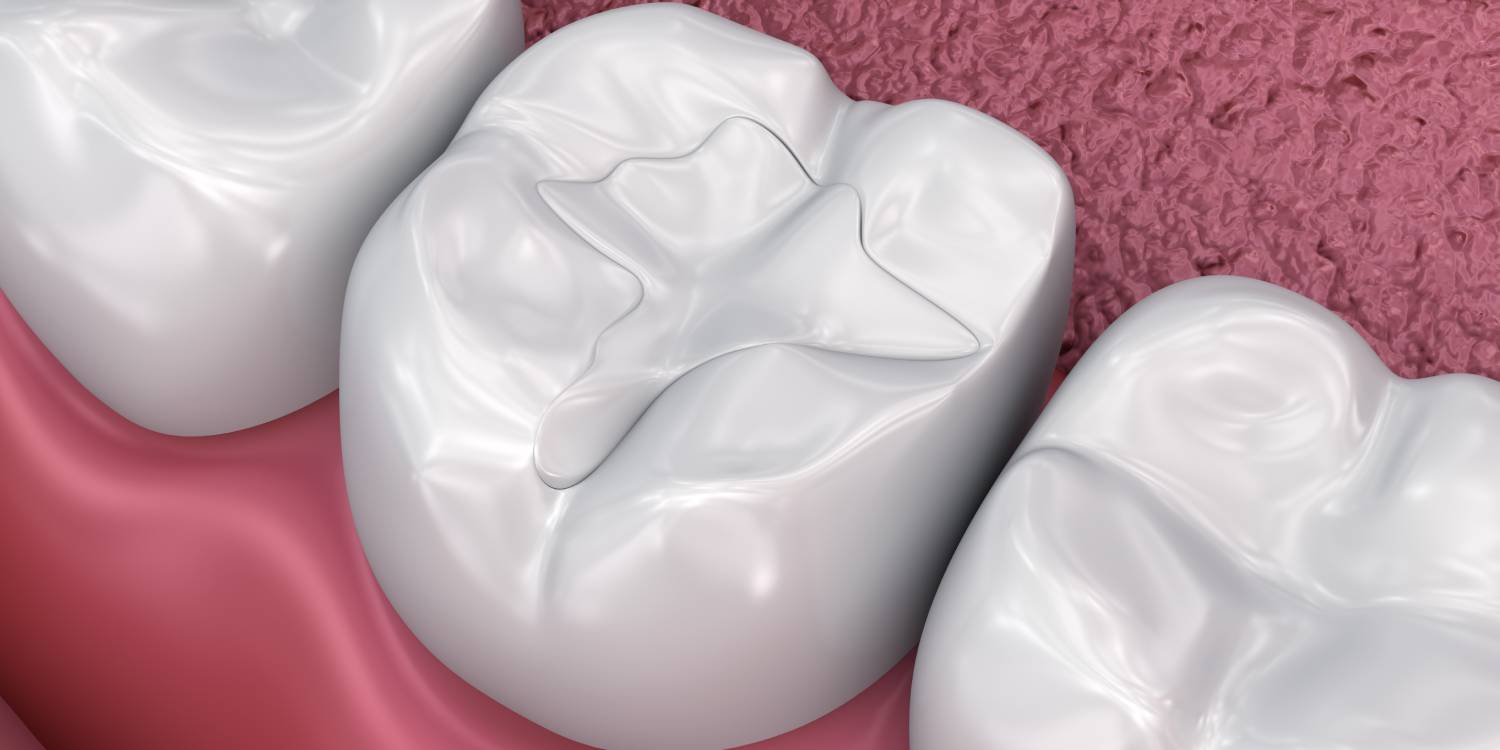Learn More About Dental Fillings
Composite fillings – also known as tooth-colored filling – are dental restorations designed to be inconspicuous and natural in appearance. They blend well with the teeth and appear more natural than amalgam fillings, which are darker and more easily seen by other people. Composite filling are made of ceramic and plastic compounds that chemically bond to the teeth. They can be used to fill in decayed areas of the teeth, as well as to help repair chipped or broken teeth. Most dentists use composite restorations to treat the teeth closest to the front of the mouth, as they are more noticeable when patients smile. However, advancements in dental technology and the composition of composite filling have made it possible for dentists to also use tooth-colored filling on molars, which receive more wear than other teeth.
Dental Fillings: Did you know…
that composite dental fillings allow dentists to preserve more of the natural tooth structure? This is because composite materials chemically bond to the surface of the tooth like an adhesive. The process takes slightly longer to complete than traditional amalgam filling, but patients can preserve more of the natural portion of the teeth while enjoying a restoration that is discreet and understated.
The Benefits and Process of Getting Composite Filling at Sullivan Darji Dental
Composite dental fillings, also known as tooth-colored filling, offer a natural-looking alternative to traditional amalgam fillings. Made from ceramic and plastic compounds, these fillings chemically bond to your teeth, providing a durable and aesthetic solution for cavities and minor tooth damage.
Advantages of Composite Fillings
- Aesthetic Appeal: Blend seamlessly with natural teeth, making them ideal for visible areas.
- Conservation of Tooth Structure: Requires less removal of healthy tooth material compared to amalgam filling.
- Versatility: Suitable for both front and back teeth due to advancements in material strength.
The Dental Fillings Procedure
During your appointment, the dentist will numb the area with a local anesthetic, remove the decayed portion of the tooth, and apply the composite resin. This resin is then cured with a special light, shaped, and polished to match the natural contour of your tooth.
Post-Treatment Care
Patients can resume normal activities immediately after the procedure. Some sensitivity to hot and cold may occur but typically resolves within a week. Persistent sensitivity should be reported to the dentist.
Why Choose Composite Fillings?
- Natural Appearance: Composite filling match the color of your teeth, making them virtually invisible.
- Durability: With proper care, these fillings can last for many years.
- Minimally Invasive: Less tooth structure is removed compared to traditional fillings.
The Procedure
- Initial Examination: During your visit, the dentist will assess the extent of the decay or damage.
- Preparation: The affected area is numbed with a local anesthetic. The decayed portion of the tooth is then carefully removed.
- Application: Composite resin is applied in layers, with each layer being hardened using a special curing light.
- Shaping and Polishing: Once the filling is in place, the dentist shapes it to fit your bite and polishes it to match the sheen of your natural teeth.
Frequently Asked Questions: Dental Fillings
Am I a candidate for tooth-colored fillings?
If you have a cavity, broken tooth, or a deteriorated filling, you may be a candidate for a tooth-colored filling. Schedule a dental consultation to find out if composites are right for you.
What should I expect if my dentist decides a composite filling is right for me?
During your visit, your gums and teeth will be anesthetized with a local anesthetic near the site of the filling. Once the area is numb, the decayed or damaged portion of your teeth will be removed to make room for the new tooth-colored filling. A resin will be placed over the area and cured with a hand-held light for less than a minute. The new dental fillings will then be shaped and polished before the procedure is complete.
What type of post-treatment care is required after getting a composite filling?
Composite dental fillings are cured with light at your dentist’s office. You should be able to return to normal activity and oral care immediately after your visit. It’s normal for treated teeth to experience some sensitivity to hot and cold in the days following treatment, but sensitivity that persists beyond a week should be reported to your dentist.

